How to Connect CCTV Camera to Power Supply
- Richard Wang
- July 28, 2024
- 9:45 am
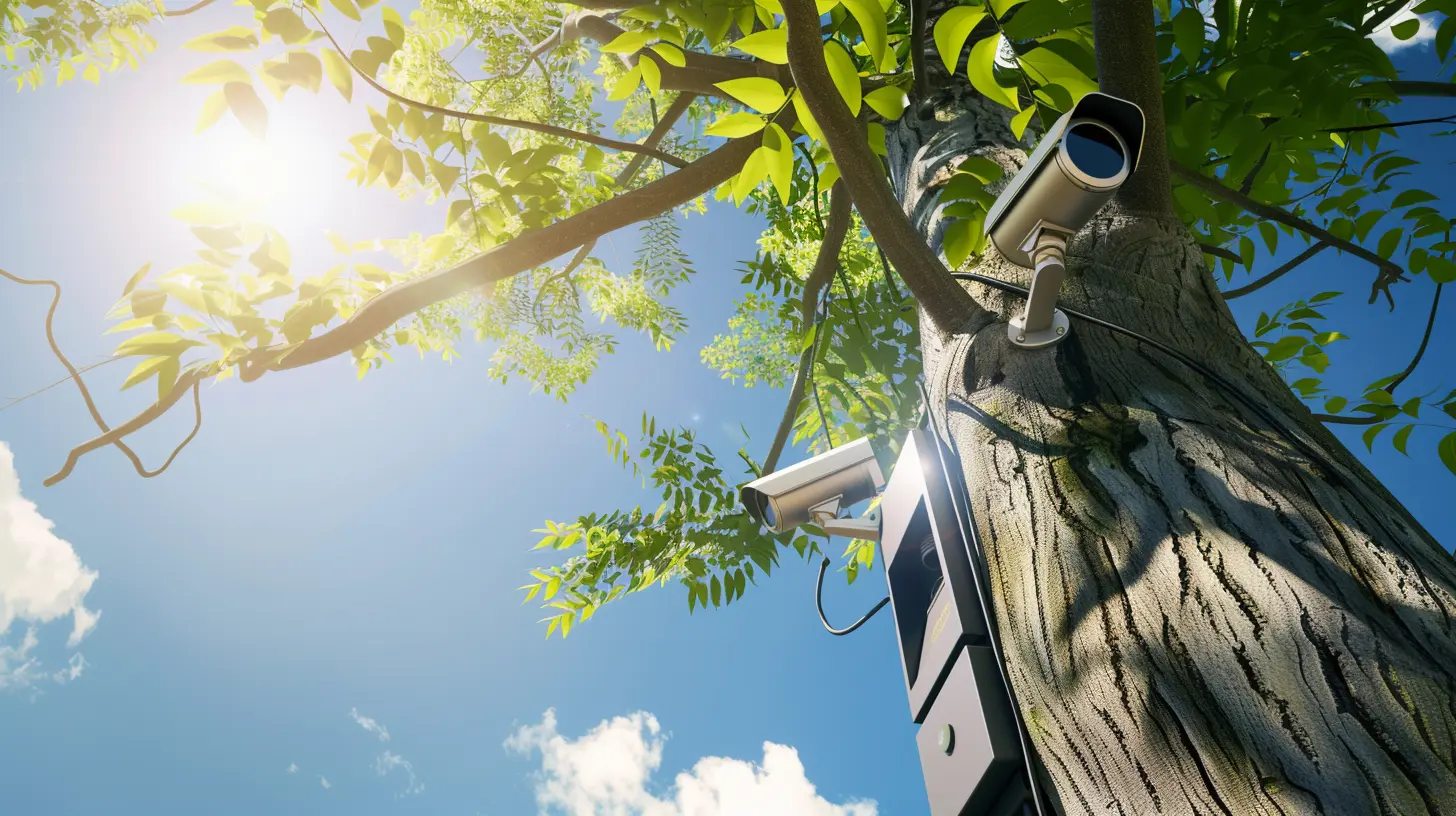
Preface
When CCTV Camera is deployed outdoors, its stable and reliable power supply has always been a crucial factor in determining its long-term stable operation. This article will explain from multiple aspects How to connect CCTV camera to power supply? We will compare the advantages and disadvantages of DC12V, DC48V, AC power supply, and POE power supply to help you understand the choice in different scenarios.
Reference Video:
Table of Contents
1.Several Main Power Supply Methods to Connect CCTV Camera to Power Supply
CCTV Camera is generally connected to the outdoor power supply in the following ways:
- DC12V
- DC48V
- AC24V
- POE (Power Over Ethernet)
Such a variety of power supply methods are applied to the design of CCTV cameras in different scenarios and also involve the result of the continuous evolution of CCTV cameras in history. With the gradual development of POE technology, such as the development of POE+ 802.3at and POE++ 802.3bt technology, POE has gradually become the mainstream in large projects. DC12V and DC48V often appear in some small projects or civil usage scenarios. AC24V is gradually disappearing in the market.
Let’s analyze the main power supply methods for connecting CCTV camera to power supply.
2.CCTV Camera Connect to DC12V Power Supply
2.1 Connect DC12V Camera to CCTV Power Supply
In the current CCTV Camera market, DC12V generally serves home scenarios or some indoor scenarios that do not require high reliability, and the power consumption of CCTV cameras is generally small.
Let’s take a general CCTV Power Supply as an example. This type of low-cost CCTV Power Supply is mainly implemented by using an AC to DC12V power supply plus a power distribution board.
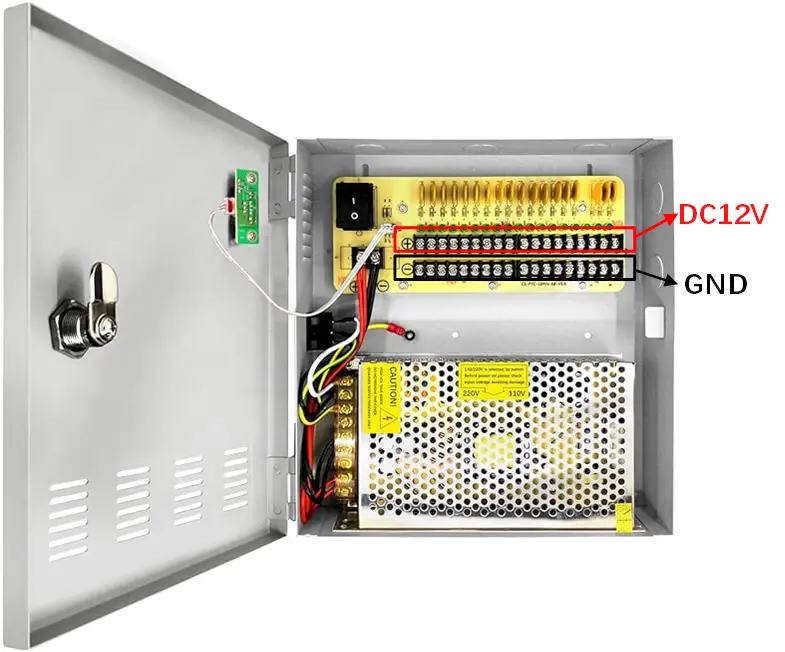
First let me explain the internal design of these low cost CCTV Power Supply so that you can better understand how to connect the camera.
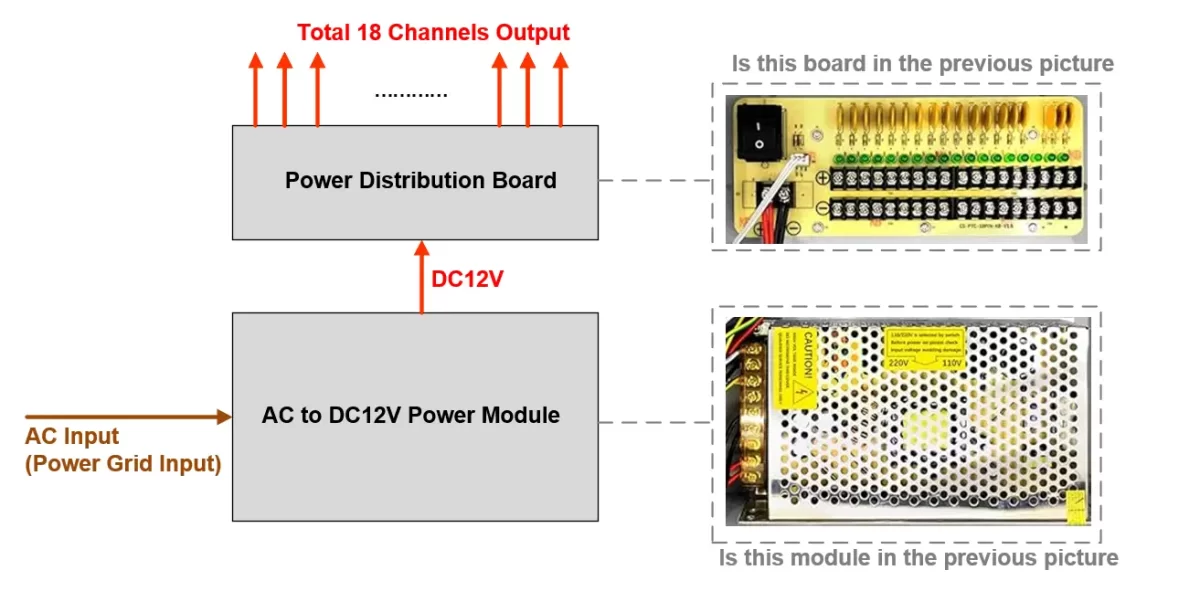
The figure above shows the basic circuit principle of the CCTV Power Supply we are using as an example. We can see that it has an AC to DC12V Power Module. Because the Power Grid uses AC power, some countries use 110V, and some use 220V. The 12V used by CCTV Camera is DC12V. So this power module first needs to convert AC power to DC12V Power. Then we can see that there is a power distribution board behind the power module, which distributes the DC12V power output by the power module to 18 ports for multiple cameras.
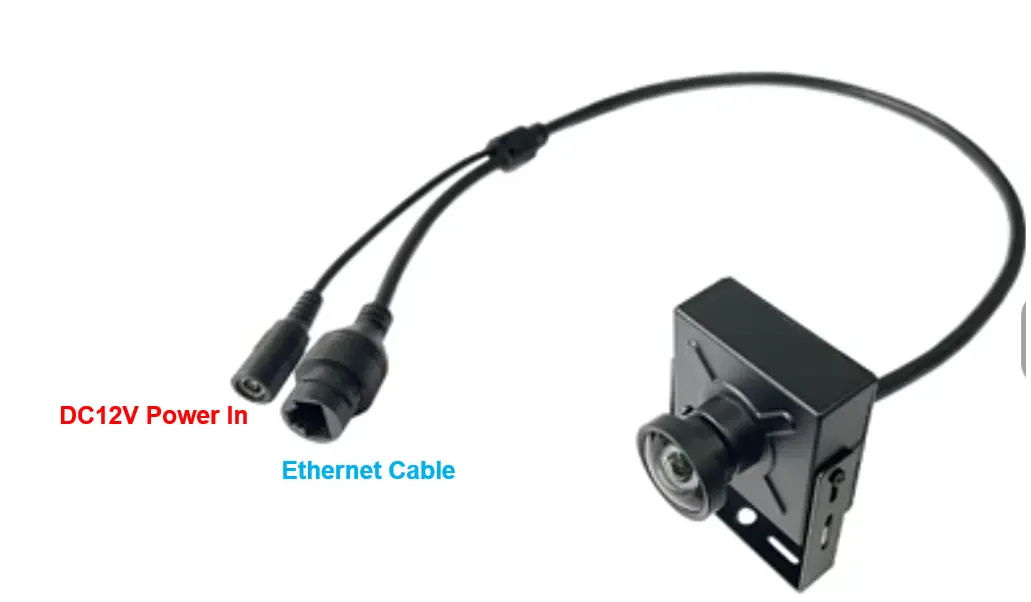

The above picture shows two examples of DC12V CCTV Cameras. You can see that this type of camera usually comes with two cables. One is the DC12V Power In, and the other is the Ethernet cable. Ethernet cable is suitable for transmitting video encoding traffic and can be connected with a network cable. However, it is specially reminded that because this article is discussing the connection of outdoor environments, it is strongly recommended to use an Ethernet cable specifically for outdoor environments. There are two common situations for the DC12V Power in interface. They generally use a DC5.5*2.1mm interface, and occasionally there is a DC5.5*2.5mm interface.
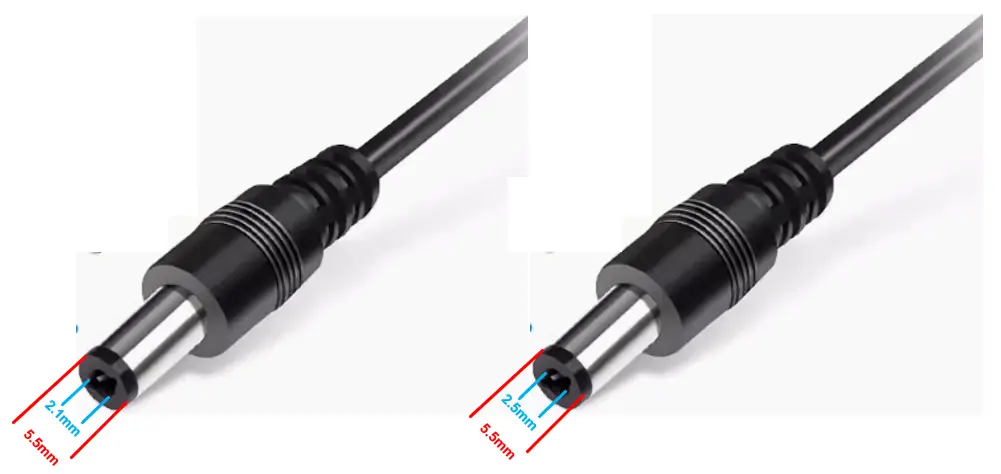
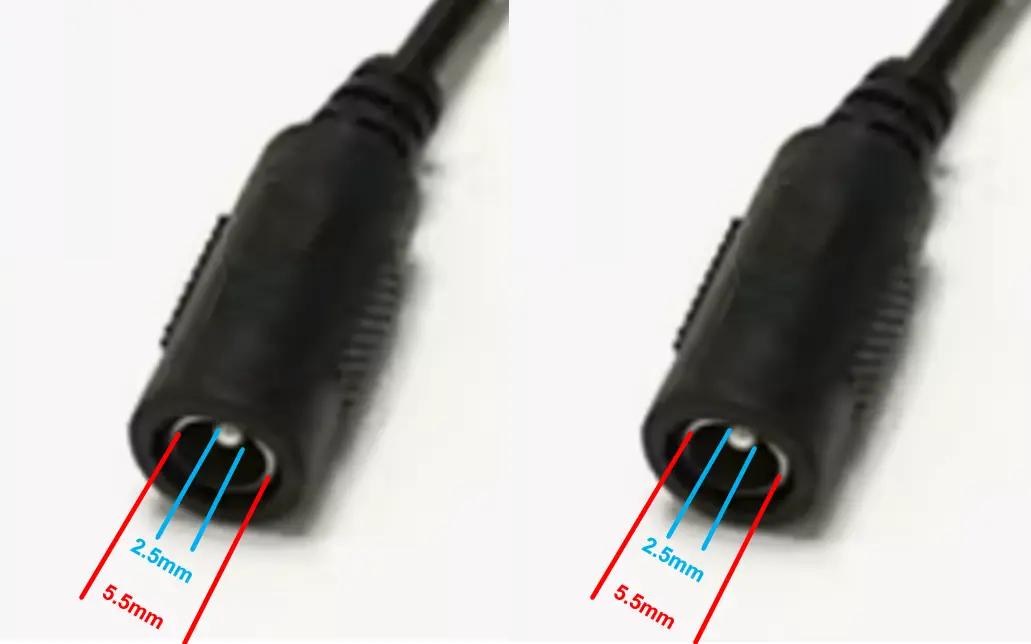
Based on the above information, we can start to build a basic topology of using CCTV Power Supply to power DC12V CCTV Camera as follows:

The figure above is a topology of connecting CCTV Camera to Power Supply. We can find DC12V+ and GND from the power distribution board of CCTV Power Supply, and connect a pig tail DC5.5mm*2.1mm cable to each. Note that there may be two types of DC5.5mm*2.1mm cables. One is that it has two wires, one is DC12V (usually red), and the other is GND (usually black or white). In another case, the DC5.5mm*2.1mm cable is a cable with two cores, then the principle is the same.
Overall this explains the topic how to connect CCTV camera to power supply but with DC12V power, there are more options lie DC48V , POE we will discuss later.
2.2 Problems with using DC12V to power CCTV Camera in outdoor scenes
2.2.1 Problem of the Traditional CCTV Power Supply Overall
The challenges faced by indoor and outdoor environments are completely different. The outdoor environment is much more complex. If you don’t deal with it well, it will be difficult to ensure the overall stable operation of the CCTV Camera network. For some large projects with high reliability and availability requirements, government projects, and security projects, it is definitely not a good idea to use DC12V connecting CCTV Camera to Power Supply. The risks it faces are as follows:
- Lightning Attack Risk
- DC Voltage Drop
- Ethernet Cable and DC Cable Deployment Same Time Increase Cost
2.2.1 Lightning Attack Risk
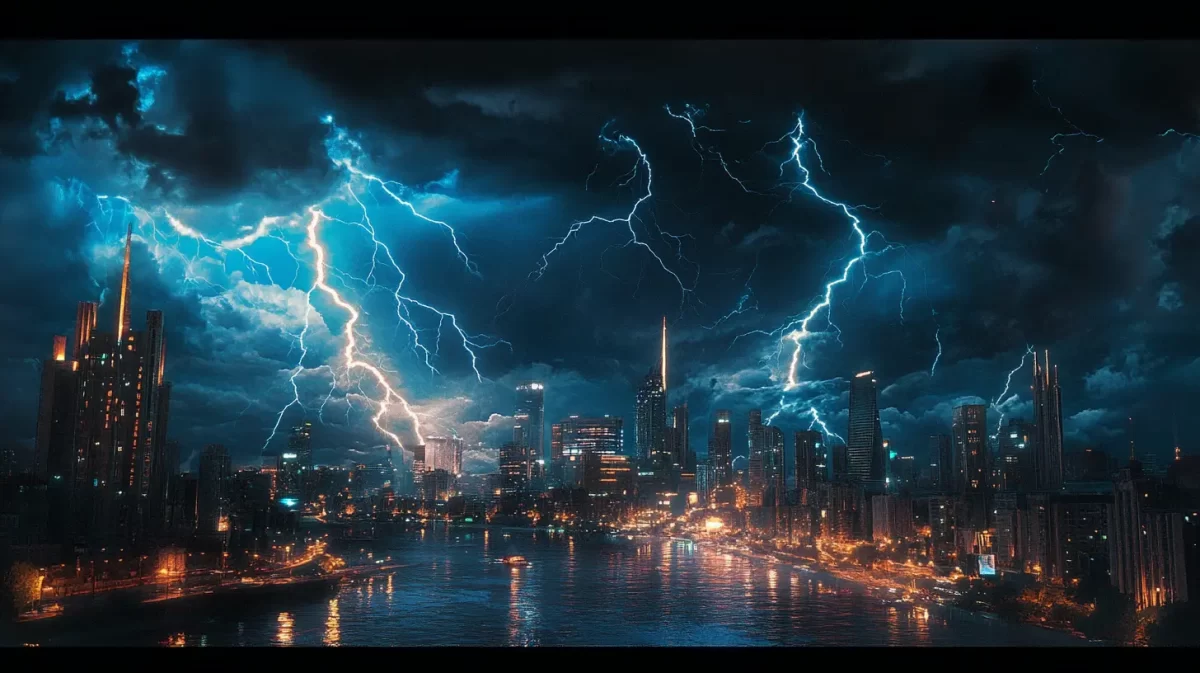
There is a risk of lightning in the outdoor environment. If the entire system is not properly designed for lightning protection, there is a probability that the power system will be damaged and the CCTV Camera will be damaged. Especially for areas with frequent thunderstorms, this risk increases exponentially. The risks of lightning are generally:
Direct Lightning Hit
Indirect Lightning Hit
For CCTV Camera systems, the probability of Indirect Lightning Hit causing system problems is often greater.
For a detailed explanation of lightning hit, please refer to the following link:
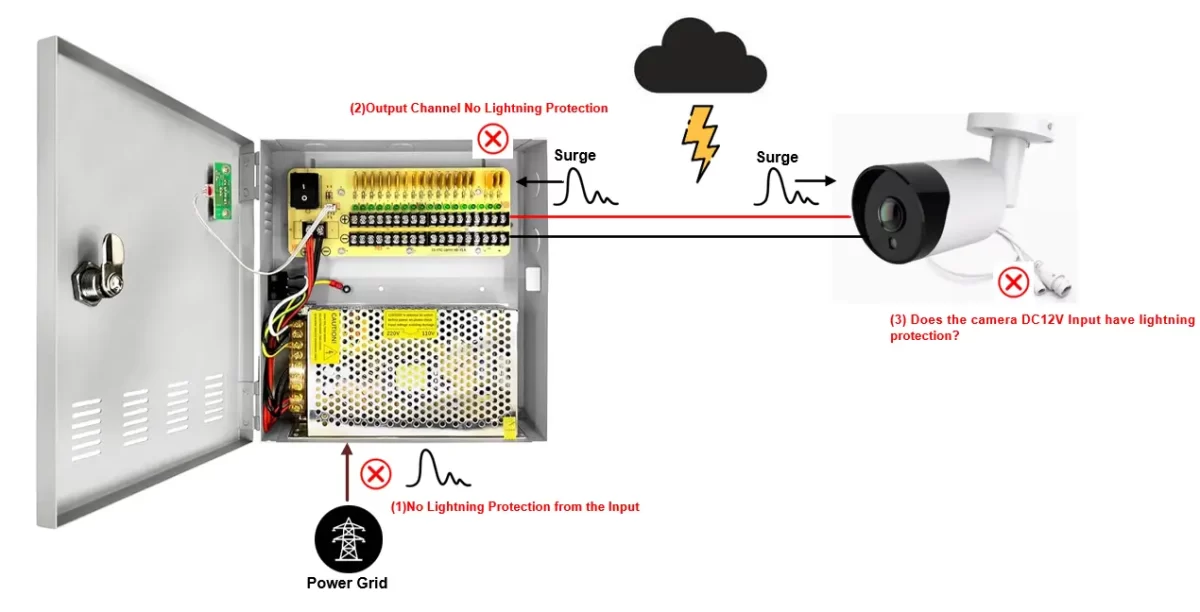
From the above picture, we can see that the problems of traditional low cost CCTV Power Supply connects to CCTV camera are mainly in three aspects:
- No Lightning Protection from the Input
First of all, we see that the traditional low-cost CCTV Power Supply does not have enhanced lightning protection design for outdoor use due to cost and design usage scenarios. The input does not add an input lightning protection module. Edgeware generally recommends reaching 20Ka level lightning protection here. When deploying outdoors, we must consider that our power input must be transmitted from the faraway outdoor power grid network. Suppose a lightning strike occurs in the middle. In that case, the resulting surge will be transmitted to the CCTV power supply’s input through the electricity cable, causing damage to the equipment or affecting the stable operation of the equipment.
- No Lightning Protection from the Output
The output of CCTV power supply cannot ignore lightning protection, because the DC12V output will travel a distance outdoors to reach the CCTV camera. At this time, whether it is inductive lightning, direct lightning or various derived effects, surge will enter the output port of CCTV power supply through the DC12V power cable, thus causing equipment failure. In fact, all the output ports of the outdoor power system need to be equipped with reliable lightning protection.
- Does CCTV Camera DC12V Input have lightning protection?
Generally, DC12V CCTV cameras are not used in large-scale outdoor video surveillance scenarios. They are more often used in indoor or home applications. Therefore, DC12V input is often not equipped with lightning protection. However, the DC12V power cable transmits DC12V from the CCTV power supply to the camera. This route is outdoors, so whether it is a direct lightning strike or an inductive lightning strike in the middle of the power cable, it will cause a surge to be transmitted to the DC12V input of the CCTV camera, which may cause the camera to be unstable, or even directly destroy the device at worst.
2.2.2 DC Voltage Drop
CCTV cameras using DC12V will actually cause voltage drop problems. This is determined by Ohm’s law, the basic principle of the circuit. The following figure is the formula of Ohm’s law:

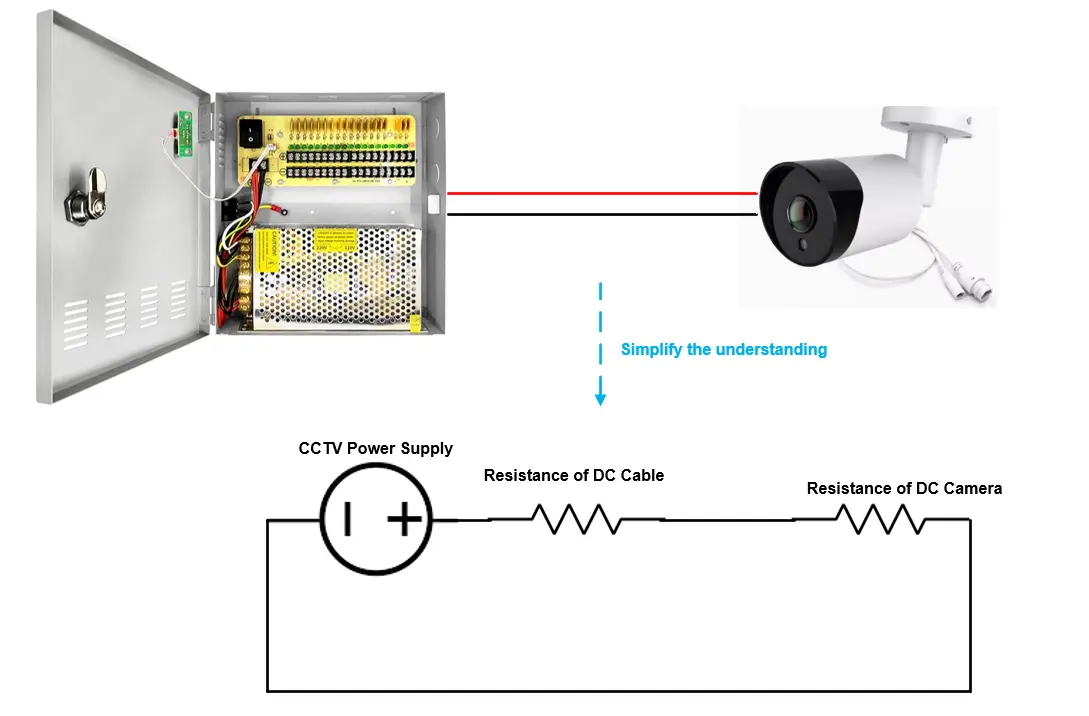
First, we simplify the entire circuit of CCTV power supply to the above figure. Of course, it is not that simple in reality, because CCTV camera also involves capacitive impedance, inductive impedance and other issues. But for ease of understanding, we simplify CCTV camera into a resistor. Then CCTV power supply is the power source, and the resistance of DC12V cable can also be simplified into a resistor, and then CCTV camera is simplified into an equivalent resistor.
We see V = IR, where V is voltage, I is current, and R is resistance. So assuming that the power of CCTV camera is 12W, because the voltage is 12V, the current is 12W/12V=1A. But because we mentioned that DC cable has resistance, then assuming that the resistance of DC cable is 1 ohm, then V=I*R = 1A*1 ohm=1V. That is, the voltage reaching DC Camera is likely to be 11V. This is a very rough qualitative judgment, and theoretical calculations need to consider several factors, which I will not go into here. Because our goal is to figure out this problem. Based on the above calculations, we can draw the following conclusions:
(1) The greater the resistance of the DC cable, the greater the voltage drop reaching the CCTV camera
The resistance of the DC cable is caused by two factors:
A. Cable diameter
Because CCTV camera itself is not a high-power device, the maximum cable used in this scenario is AWG16. It is impossible to use a cable that is too thick to reduce the cable resistance, which is inconvenient to install. In addition, the cost of the cable is greatly increased.
For reference of cable diameter: American Wire Gauge
B. Cable length
Because when deployed outdoors, the location of the CCTV camera is often a distance away from the CCTV power supply. This length is not controllable. 10-50 meters is very common in outdoor CCTV camera deployment scenarios. At this time, you can imagine how much the cable resistance will become.
(2) The greater the power, the greater the power loss in the wire.
There is another formula that determines the loss caused by the cable: P=IR. That is, power is equal to current multiplied by resistance. In other words, the greater the resistance, the greater the power when the current is constant. So if our cable has a large resistance value due to length or diameter problems, then the power loss will also be large.
According to the formula P=IR, a large current will also cause a large line loss. For example, if the same power is 48W, if we use a 48V system, the current is only 48W/48V=1A. And 48W in a 12V system, the current = 48W/12V=4A. Did you notice that the current is 4 times larger? So what if we use the formula P=IR to look at the line loss? That is to say, the line loss of the 12V system is 4 times that of the 48V system.
To sum up, the weakness of the DC12V system is very obvious. It is definitely not a good idea to power a CCTV camera via a DC12V CCTV power supply, at least outdoors.
2.2.3 Ethernet Cable and DC Cable Deployment Same Time Increase Cost
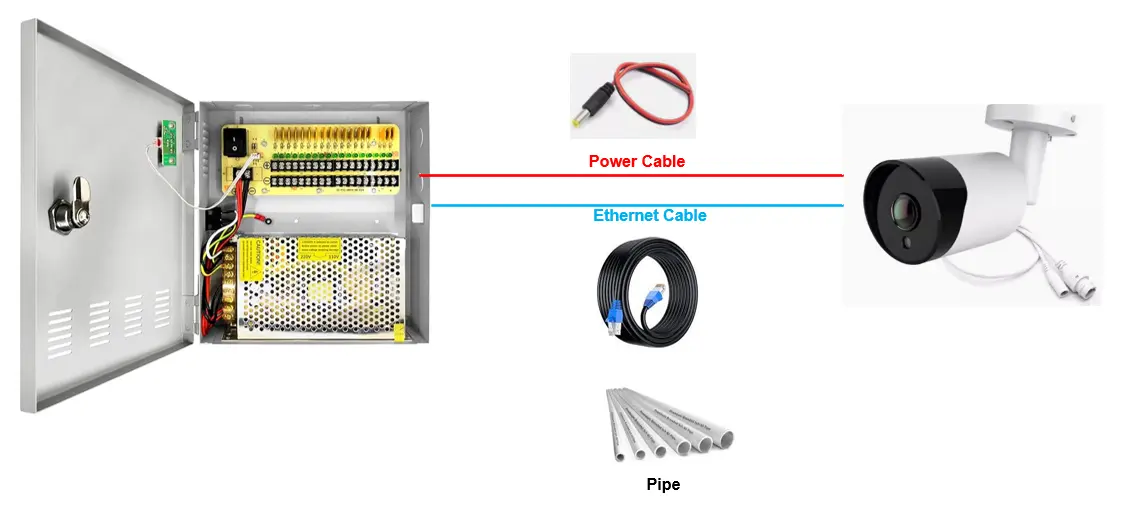
In fact, there is POE technology on the market now. The advantage of POE is that Ethernet cable is responsible for both signal transmission and power transmission. However, in the scenario of DC12V power supply, we have to deploy Ethernet cable and DC12V cable. This greatly increases the workload of deployment. In addition, we cannot just think of it as an extra set of cables, because we also have to put the cables into outdoor pipelines, which greatly increases civil work. In many countries where labor is expensive, this is obviously very disadvantageous.
3.DC48V Connect to CCTV Camera
3.1 DC48V Connect to CCTV Camera
Now that we know how to Connect CCTV Camera to Power Supply based on DC12V, let’s learn about DC48V. DC48V is often used for relatively high-power CCTV camera power supply. When the voltage increased, it brings the following advantages:
(1) Compared with DC12V, the voltage drop of the same cable is lower.
(2) Compared with DC12V, the line loss is reduced.
(3) The impact of voltage drop on the DC48V system is not as great as that of DC12V.
3.2 Special Notes on Using DC48V to Power CCTV Camera-Voltage Range
Please note that the voltage input of a DC48V CCTV camera often has a range. For example, if the CCTV Camera mentions a power input range of 42V-50V, the DC48V power supply we choose must be within its input range. This seems to be easy to understand. However, please note that there are some special cases that cannot be ignored. Because some cameras, such as professional PTZ Cameras, have motor systems inside. These motor systems are used to turn the PTZ camera in order to observe the surroundings.
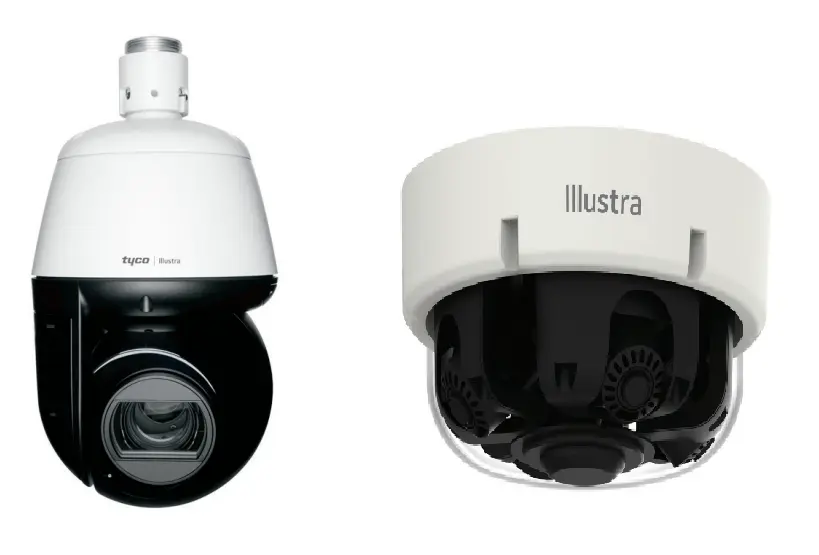
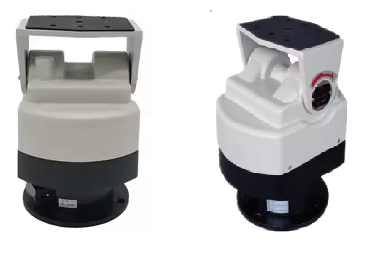
The above picture is an example of CCTV camera motor system. Different types of CCTV cameras use different motor systems. However, for some high-end products such as multi-sensor cameras (which can be understood as multiple small cameras integrated into a large camera), their weight determines that the motor system they use must be high-power, so it is likely that their starting voltage will be higher. Edgeware has had projects that require DC Voltage 52V or even above 55V. If you provide these cameras with DC48V voltage, the problem that may occur is that the CCTV camera functions normally, but the motor system cannot start and the camera cannot turn.
3.3 What kind of CCTV Power Supply is suitable for use in DC48V CCTV Camera scenarios?
3.3.1 Features Recommended
The scenario of connecting CCTV cameras with DC48V usually occurs in large government projects, and the cameras used therein are generally well-designed for outdoor use. These cameras generally have the following features:
- Good waterproof properties, Ingress Protection reaches IP65 or above
- Rugged design for outdoor usage
- Good lightning protection design for Ethernet input and DC48V input
Correspondingly, in these scenarios, we should not use the low-cost CCTV power supply system mentioned in the <2.DC12V Connect to CCTV Camera> section. The reliability design of these simple systems is not the same level as that of CCTV cameras themselves, which will greatly affect the reliability of the entire CCTV camera network. It is recommended that in this scenario, the CCTV power supply system needs to include the following features:
- Ingress Protection of IP65 or above
In large projects, CCTV cameras can be deployed in various outdoor environments. IP65 or higher ingress protection levels isolate the CCTV cameras from external environments such as high humidity, high salt, and seaside environments. The ingress protection level of CCTV cameras has been improved, but if we deploy a power system with IP55 or lower, the power system will be damaged before the CCTV cameras. The reliability of the entire network will be a problem.
- Perfect lightning protection design
A large outdoor CCTV camera project must have a complete lightning protection design. Imagine if there are 500 sites, and each site has about 4 cameras, it will be a very large network. If the lightning protection design is not done well, there is a high probability that a certain number of sites will have problems after each thunderstorm, which will greatly increase maintenance costs.
- CCTV UPS power supply and battery included
In large-scale CCTV camera projects, the availability of the entire network is very high. It is impossible for the entire network to stop working just because the electricity power grid is offline. However, the contradiction is that the power grid in most countries in the world is not stable, and frequent offline is common. Therefore, it is very necessary to equip CCTV power supply with UPS battery backup. The battery life can be calculated based on the power grid situation in the country where the project is located.
If you have any questions about calculating the UPS battery life, you can read our explanation of its principle:
How to Calculate UPS and Battery for CCTV System
We also have UPS calculator available for calculation:
- High reliability and good waterproof power interface
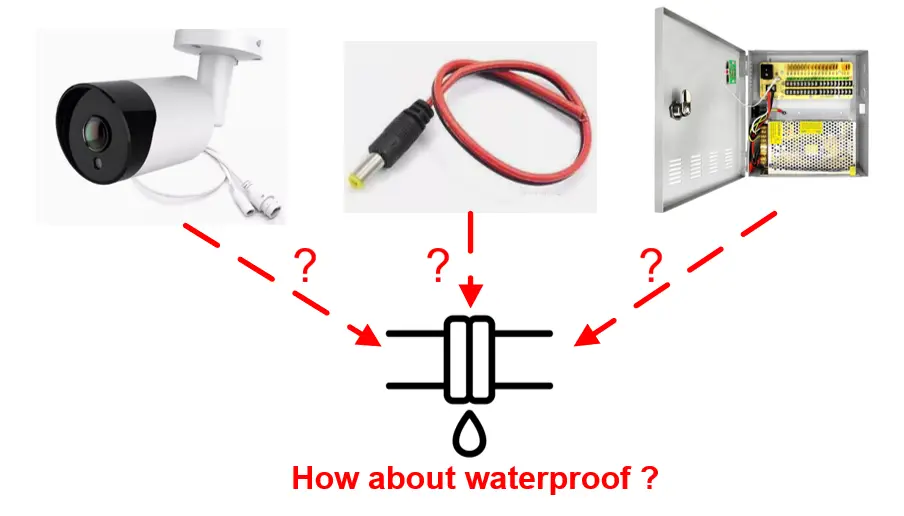
The DC12V system we introduced in <2.DC12V Connect to CCTV Camera> section is generally more suitable for use in civilian or home scenarios with low requirements. In large outdoor CCTV camera projects, it has a high water leakage risk. Large projects have huge networks and many sites. When there are water leakge risks, the reliability of the entire network will be greatly affected, and the probability of on-site maintenance will be greatly increased, thereby greatly increasing the operation and maintenance costs. In the final analysis, we can see that these simple systems have no special reinforcement for waterproofing for the interfaces of power and ethernet entering and exiting the system.Therefore, we recommend that the system input and output interface should be a waterproof interface like the following:
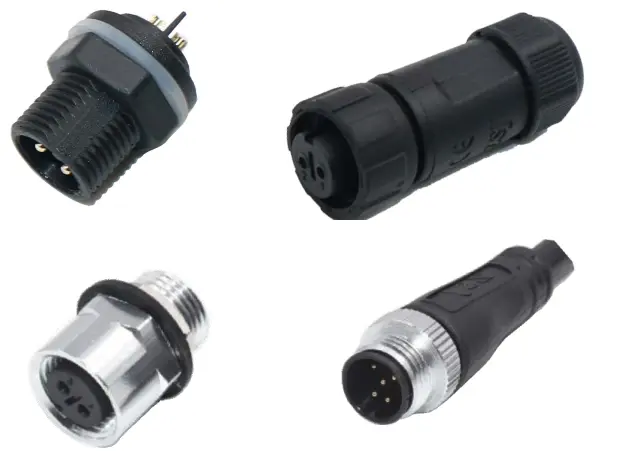
3.3.1 DC48V CCTV Backup Power Supply Recommended
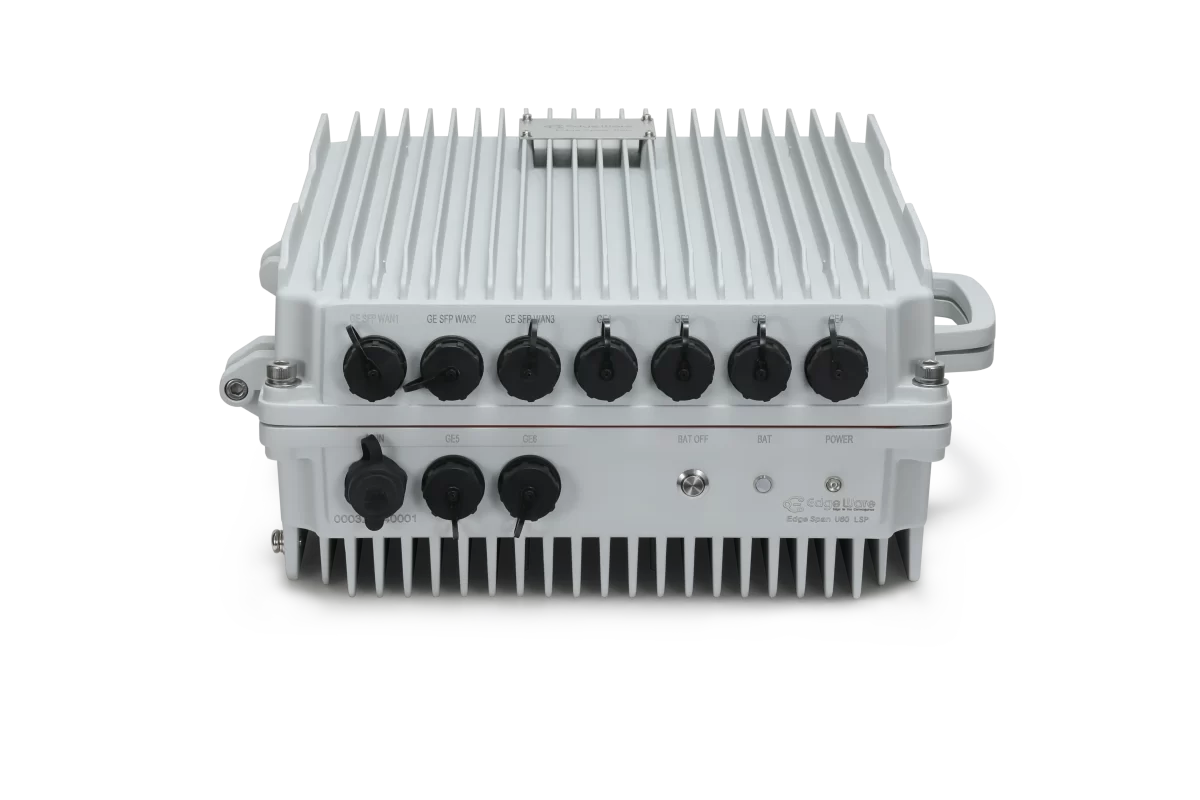
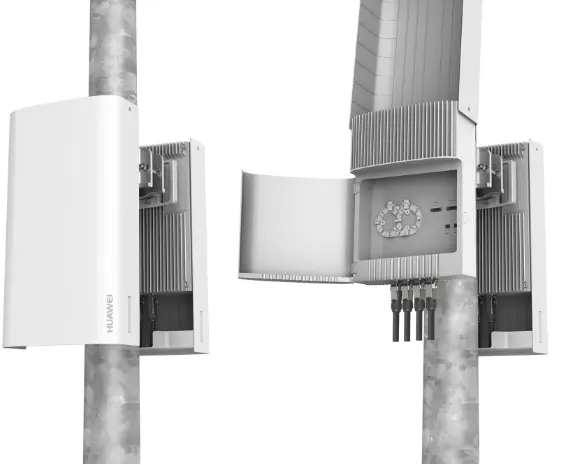
Edgeware’s Edge Span series products are all-in-one UPS battery backup power supplies designed specifically for outdoor deployment of CCTV cameras. The system’s Ingress Protection reaches IP65 level, and it has multiple models such as POE Switch, 5G, Edge Control, etc., with built-in UPS and battery:
Huwei PowerCube is an integrated power system designed by Huawei specifically for outdoor deployment of CCTV Camera. The system has IP65 level ingress protection. It has multiple models such as POE switch and GPON. The system has built-in UPS and can be equipped with external battery modules:
3.4 Connect DC48V Camera to CCTV Power Supply

The DC48V CCTV Camera using the above 3.81mm inteface is more common, but there are other types, the principle is actually the same, we need to find the definition of the interface according to the CCTV camera’s operating manual, that is, which pin is DC48V and which is GND?

The above figure shows the topology of the connection between DC48V CCTV camera and CCTV power supply. Taking Edgeware’s products as an example, for large CCTV camera projects, customers are generally provided with pre-made waterproof DC48V cables. The advantage of this type of pre-integrated waterproof cable is that it has strong waterproof properties, and its standardized quality can be expected. The interface connecting this waterproof cable and CCTV power supply is designed to match, generally one end is female and the other end is male. In this way, customers only need to make sure that the connector is plugged in and fixed.
3.5 Lightning Protection of DC48V Camera Scenario
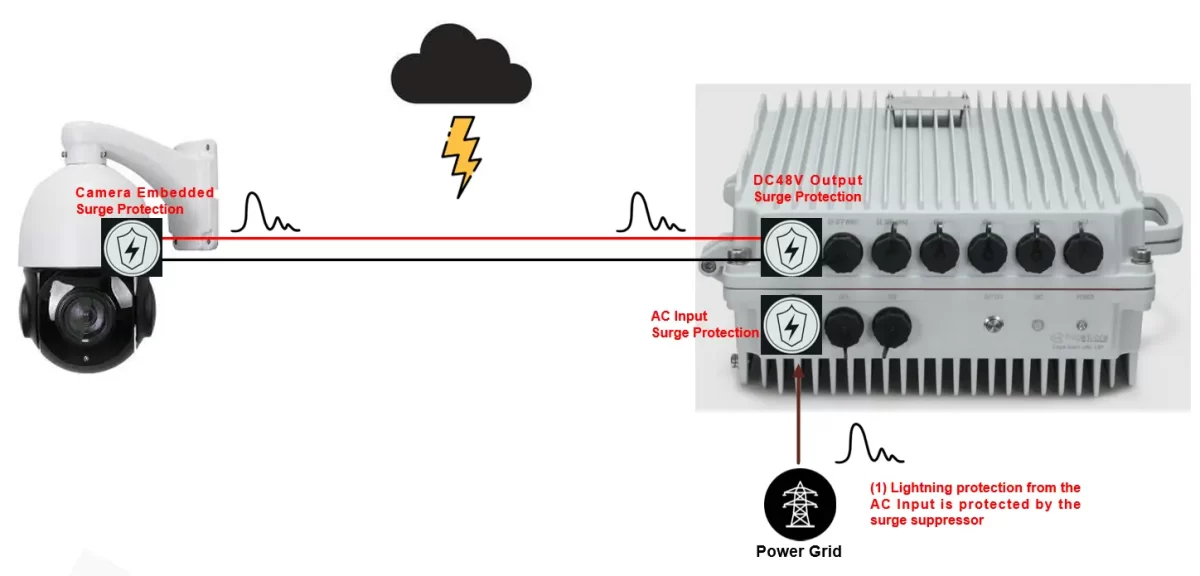
CCTV Cameras powered by DC48V are usually used in large outdoor video surveillance projects, so they are usually equipped with surge suppressors. There are exceptions occasionally, and you need to confirm this with the supplier when purchasing. For Edgeware’s CCTV power supply products, they are equipped with a complete AC input surge suppressor and DC48V output surge suppresor. So looking at the topology in the figure above, the entire network is under a good surge protection design, and you can expect the system to run stably for a long time without being threatened by lightning.
4.POE(Power over Ethernet) to provide power to CCTV Camera
4.1 Power Over Ethernet Standards
Previous section that we know how to Connect CCTV Camera to Power Supply based on DC48V, let’s learn about POE in this section.
Power over Ethernet (PoE) describes any of several standards or ad hoc systems that pass electric power along with data on twisted-pair Ethernet cabling. This allows a single cable to provide both a data connection and enough electricity to power networked devices. This article mainly focuses on the technologies related to POE powering CCTV. We will discuss other devices such as WIFI AP powered by POE in other articles.
The following are some of the more common POE standards on the market:
IEEE 802.3af (POE) has a maximum power of 15.4W, and it is recommended to operate at 12.95W
IEEE 802.3at (POE+) has a maximum power of 30W, and it is recommended to operate at 25.5W
IEEE 802.3bt (POE++) standard,different manufacturers provide different maximum power capabilities and the largest one on the market can reach 110W. It is generally provided to 90W.
It can be seen that there are relatively comprehensive POE standards covering different power supply requirements. 802.3af (POE) is generally used for small low-power cameras. 802.3at (POE+) can be widely used for high-performance bullet and PTZ cameras. 802.3bt (POE++) is designed for some particularly high-performance cameras. The following figure shows some typical high-performance CCTV Cameras. They generally have the following characteristics:
(1) High resolution, with multiple advanced functions integrated inside.
(2) Often it is a system composed of multiple cameras.
(3) The angle and direction of the camera can be adjusted, which generally requires a high-performance motor embedded.
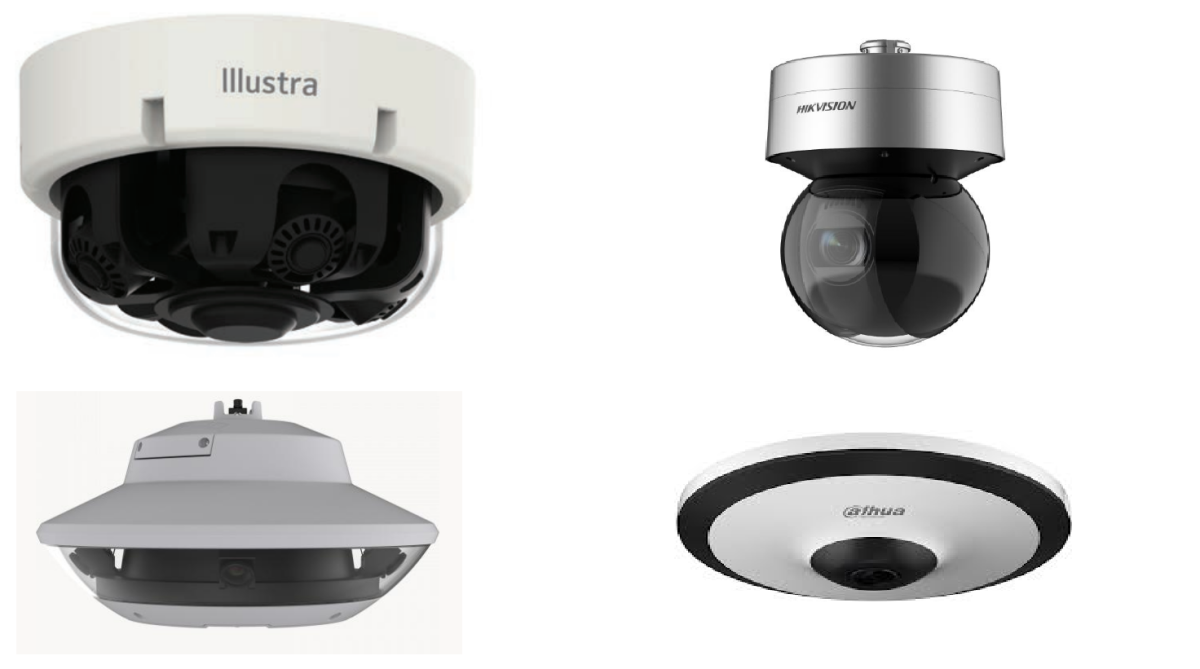
4.2 Benefits of POE
4.2.1 Standardized Connection Cables

POE greatly simplifies the connection from CCTV Camera to CCTV power supply, so that power and video data can be transmitted through the same network cable. This avoids the DC cable wiring mentioned in the previous chapter. At the same time, because Ethernet cables are standard products, various non-standard manual work in DC wiring is avoided, which benefits the long-term reliability of the network.
4.2.1 Standardized Power Standard
Because whether it is a CCTV camera or a power supply system that supports POE, they must strictly follow the 802.3af, 802.3at or 802.3bt standard. The standard has standard definitions for voltage and power. As a result, the mainstream products on the market are actually designed with some standard chips for POE functions. These standardization efforts have greatly improved the quality and reliability of the entire system.
4.2.3 Relatively easy to implement network port lightning protection
Compared with DC12V and DC48V systems, lightning protection for network ports is much more standardized and relatively easy to implement. CCTV cameras and CCTV power supply systems used in large projects generally have relatively standard reference designs in this regard, so lightning protection is included when they leave the factory. This means that integrators do not need to consider these issues extra.
4.3 Special Considerations for POE Voltage to Power Camera with Motor
POE is the simplest implementation method among so many options for powering up CCTV cameras. This article will not go into details about its connection method. However, we need to remind you of a problem that occurred in project practice. Please note that there are many high-end CCTV cameras using 802.3bt on the market. They not only require high power, but sometimes even have special requirements for voltage range. The figure below is some information about the POE standard. Let’s take a closer look at the Voltage Range:
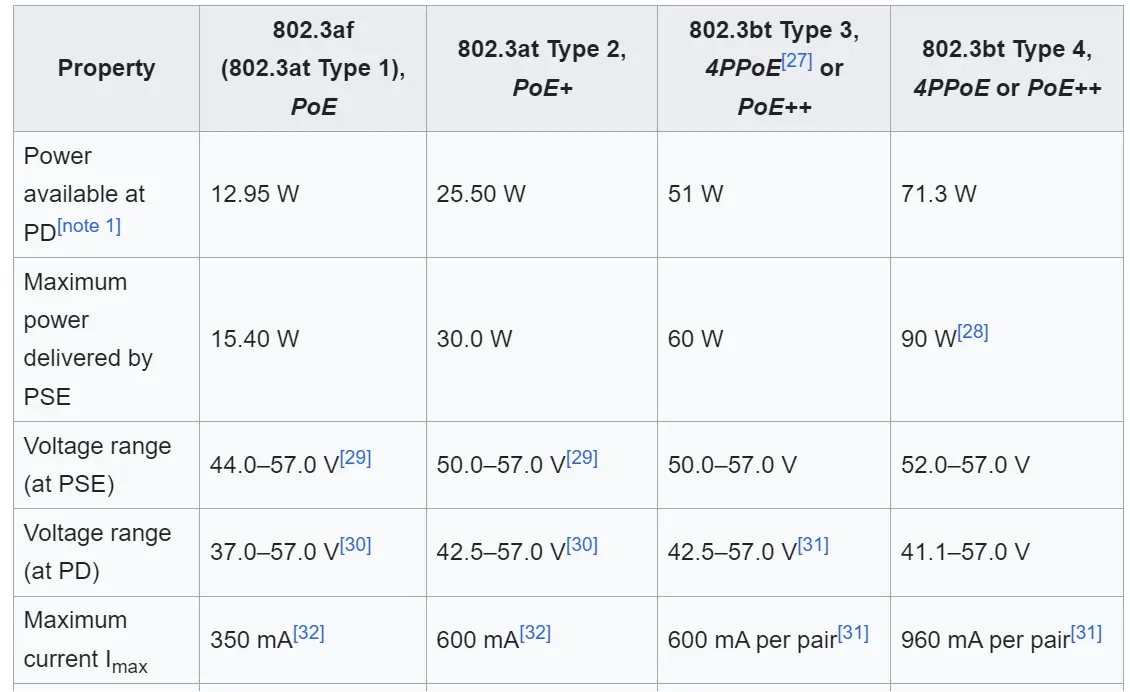
Notes: PSE: Power Source Equipment PD:POE Powered Device So in our case PSE is the CCTV Power Supply and PD is the CCTV Camera
Information Source from: https://en.wikipedia.org/wiki/Power_over_Ethernet
Let’s look at 802.3bt. The voltage range of both type 3 and type 4 PD is a range. For example, the voltage output requirement of 802.3bt Type 4 for 90W POE++ for PSE (CCTV Power Supply) is 52-57V. And the requirement for PD (CCTV Camera) is that it can accept a power supply range of 41.1-57V. But in fact, many manufacturers have special circumstances, which need to be checked case by case. If necessary, CCTV power supply system and CCTV camera will be tested together to clarify the range to avoid deployment risks.
Let’s take a practical example:
This is a high-performance CCTV camera. If powered by POE, it requires 802.3bt. The following figure shows the power input requirements in its datasheet:

IIIustra Pro Gen4 requires IEEE 802.3bt Type4 POE++ power supply, the power reaches 71.3W. So if we build a topology to power it, can it work properly?
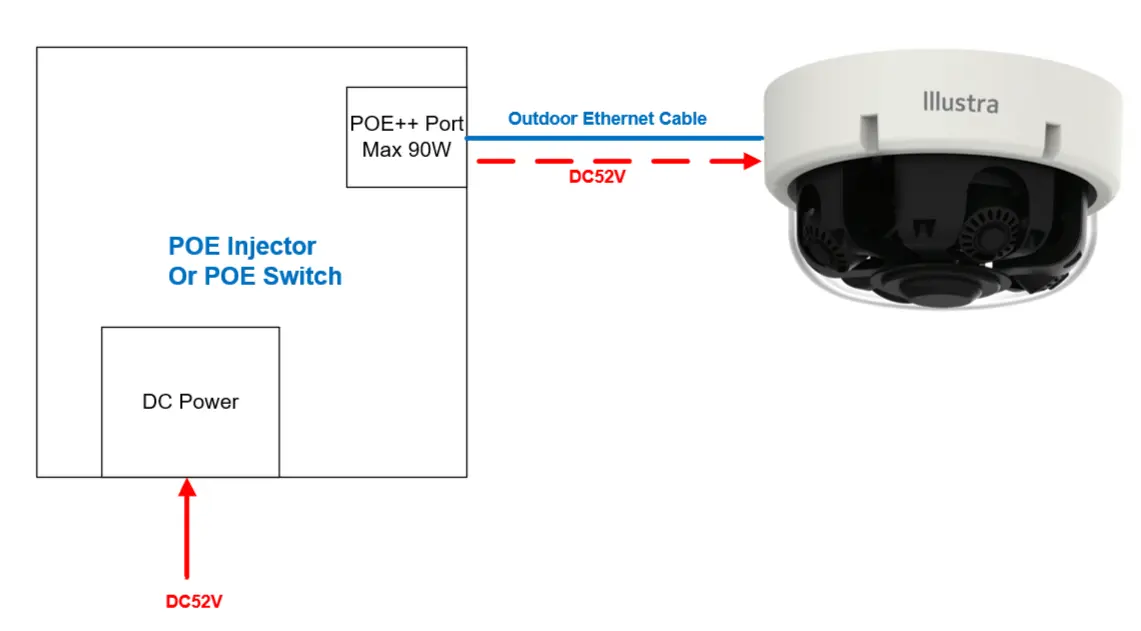
This is an example of an Edgeware project. In fact, the camera was able to power up and work properly. However, its motor did not work properly, which caused the camera to be unable to adjust its angle. From the 802.3bt requirements for PSE and PD, the topology in the figure above should be fine. So we continued to investigate and found that the datasheet mentioned POE BT Injector IA-POE-90-U00 recommended. So we checked the original POE Injector they recommended:
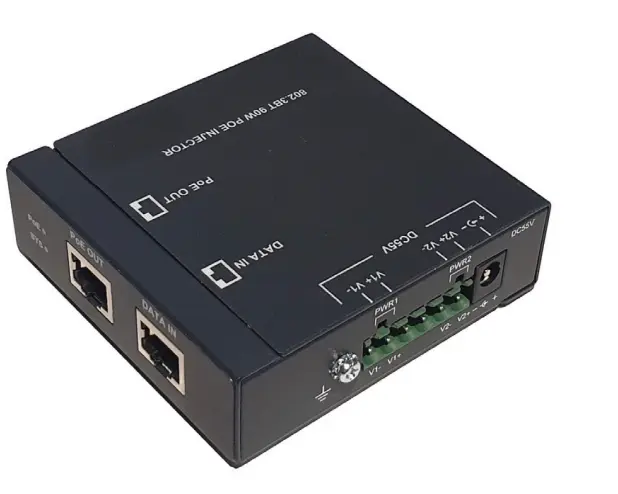

We found that this original POE Injector is designed to be used with IIIustra Pro Gen4, and its required input voltage is 55-57VDC. This means that the required voltage must be higher than the PSE output voltage range of 52-57V defined in 802.3bt type4. As shown below:
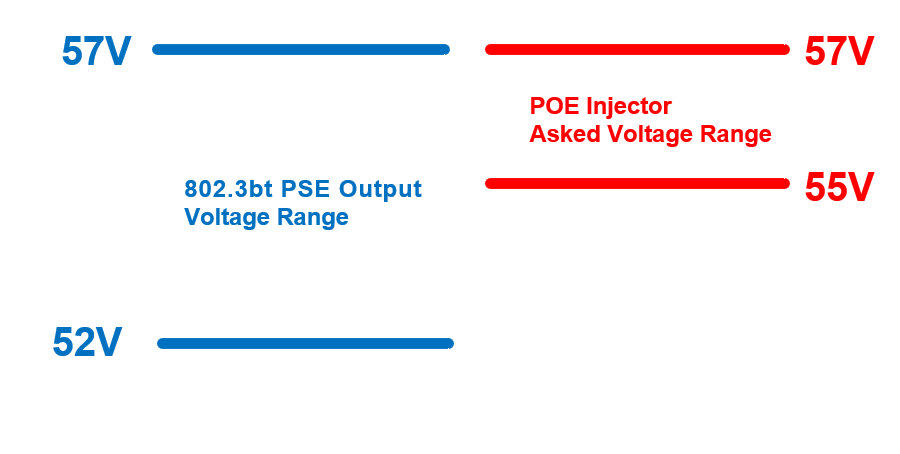
So in this case, although we input DC52V voltage, which theoretically meets the requirements of 802.3bt PSE output voltage range, the voltage requirement of the built-in motor of CCTV camera in this case needs to be higher than 55V, which leads to a series of problems. Therefore, we remind everyone that when encountering 802.3bt POE++ cameras, you need to confirm the voltage requirements with the supplier repeatedly to avoid such problems.
4.4 Lighting Protection of POE Connecting CCTV Power Supply
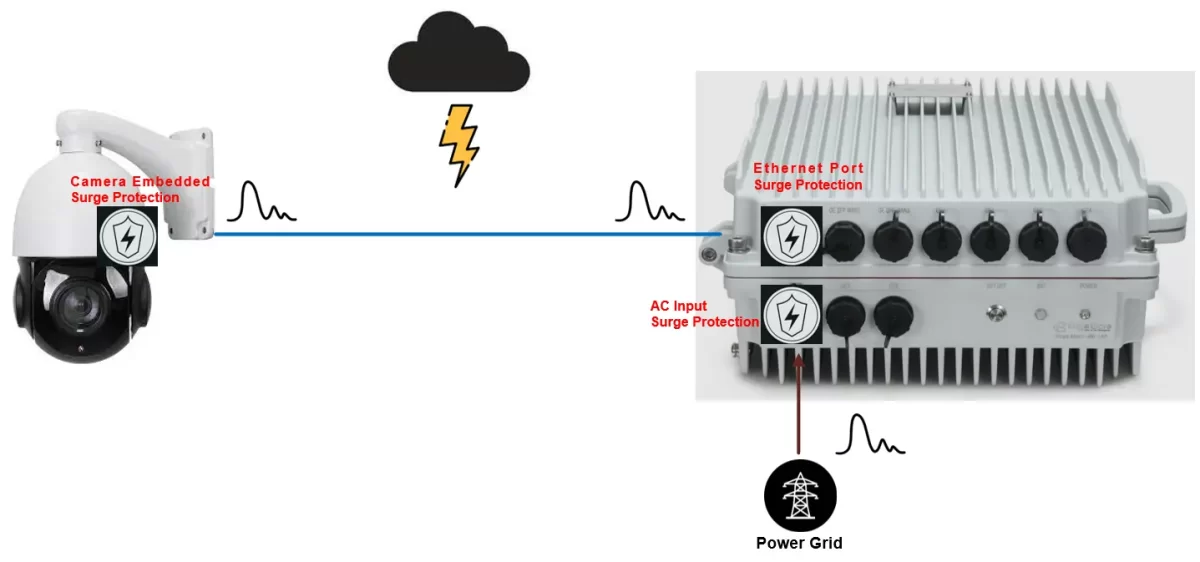
As shown in the figure above, in the POE scenario, we need to ensure that the Ethernet port of the camera, the Ethernet port of the CCTV Power Supply, and its AC Input are all configured with surge protection to ensure long-term stable operation of the entire system.
5.Summary
How to connect CCTV camera to power supply is often not just a question of operation and installation, but more of a design and system consideration. When we provide power connection for CCTV camera in outdoor environment, we have many options such as DC12V, DC48V, AC24V, POE, etc. The actual design should be based on the needs of the project and cannot be generalized. I hope everyone can find the right design in their own project and deploy a stable and reliable CCTV camera network.

